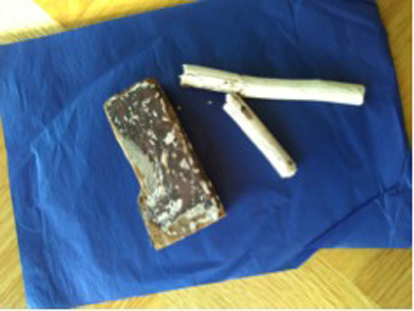Balancing Boats and Bodies
The difference between humans and boats in this model is that it is difficult to pinpoint what provides a person with resilience.
During my primary care attachment I saw an example of where external support systems had affected two patients’ resilience: One woman with chronic obstructive pulmonary disorder was very isolated and had not left her flat for weeks, she often requested home visits for reasons such as forgetting how to use her inhaler. The other patient had osteoarthritis and she was a lot more independent and involved in the community. She was aware and informed about her illness meaning she knew when it was appropriate to seek medical attention and had adapted a good medical regimen. Two of her siblings having osteoarthritis could also have had assisted with her independence.
Apart from the different physical impairments of the diseases the two women’s involvement in the community and access to information greatly influenced the impact of disease on their lives. One aspect the woman with chronic obstructive pulmonary disorder was lacking was connectedness due to her impairment she was unable to independently go outside so experienced isolation making it more difficult for her to gain knowledge about her condition.
The other patient was a practicing Christian so her religion provided her with meaning and purpose as well as connectedness from volunteering with the church.
I concentrated on the theme of boats for my creative piece due to one of the guest speakers on our Whole Person Care course. He described how being immersed in nature on his canal boat caused him to re-connect with the world and helped him out of the negative spiral towards depression. For the woodcarving I used teak from an old boat for the hull, although untreated, it is fairly resistant to decay from the elements. For the funnel I used driftwood, which has obviously been affected by the sea, to show how the same exposure can lead to different results depending on the material.
In conclusion it is useful to train resilience to prevent shocks from disturbing the system so much that it cannot return to normal. It is also important to be aware that sometimes people may come across strong, for example thinking that they are too independent to go to the GP if they have a suspicious looking mole. Instead they could be teetering in the zone of precariousness (2) like a sturdy-looking fiberglass catamaran figure.
References:
1) Trevor Thompson. Health, holism and resilience. Lecture at the University of Bristol, Bristol. 2017

I think this piece of art accurately portrays the significance of resilience in all aspects of healthcare. Not only can it change the treatment process of the patient but also affect the patient-doctor relationship and consequently treatment outcome. To some people resilience comes naturally, to others it is something that grows over experience and I liked the use of the boat as a metaphor for finding that balance on the water and how different designs can prepare you for a storm. Resilience could have a much greater impact in preventative medicine but also in day to day care as it is encouraged and recognised.